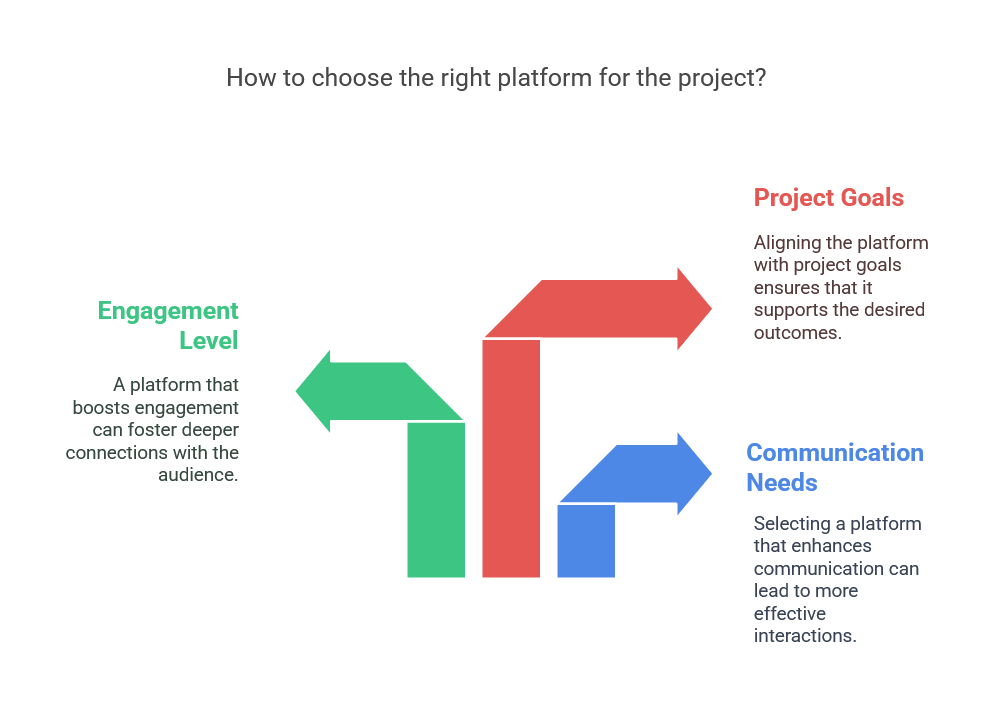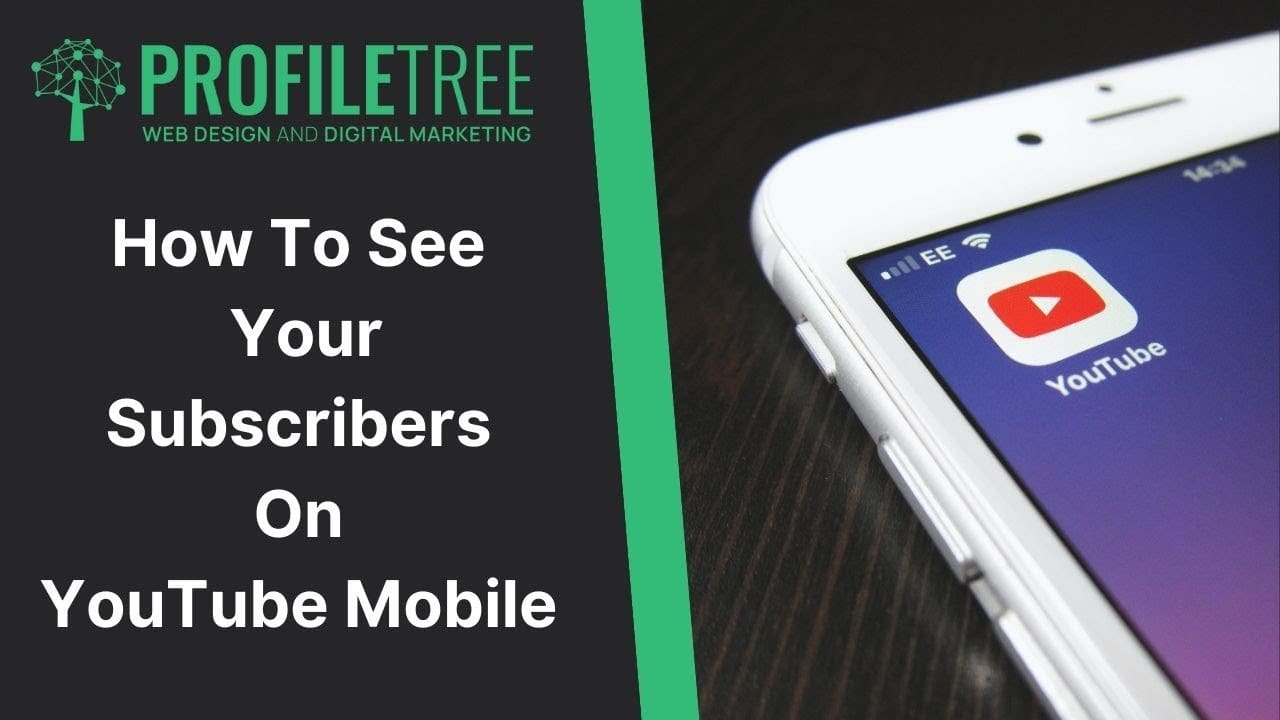
Video Content Strategy: Choosing the Right Platforms for Your Audience
Table of Contents
Video’s power in 2025 is undeniable: billions of daily views across social platforms, rising live-stream consumption, and an ever-growing appetite for immersive visuals. Yet simply producing great content isn’t enough. Where you place those videos—YouTube, TikTok, LinkedIn, your site, or specialised industry forums—can shape whether you gain traction or fade unnoticed.
This article offers a framework for choosing the right video platforms based on audience habits, content style, and business goals. Whether you aim to build brand awareness, drive direct conversions, or educate a niche professional crowd, aligning your video content strategy with the most suitable channels ensures maximum impact.
“A stellar video delivered on the wrong platform wastes potential. Knowing your audience’s digital hangouts and matching them with each video’s purpose is crucial for ROI,” advises Ciaran Connolly, Director of ProfileTree.
The Importance of Platform Selection

Choosing the right platform for your video content is crucial for reaching your target audience effectively. Each platform has unique strengths that align with different goals and content styles.
Audience Behaviour
Different user demographics frequent different platforms. Younger, entertainment-driven consumers might prefer TikTok or Instagram Reels, while B2B professionals converge on LinkedIn or niche communities. Choosing incorrectly can mean minimal engagement or mismatched messaging.
Content Style Compatibility
Live streams flourish on Twitch or YouTube, short comedic sketches might thrive on TikTok, in-depth how-tos often flourish on YouTube or a dedicated brand website for potential lead captures. Matching format length and tone to platform norms helps you meet viewer expectations.
Algorithmic Visibility
Every platform’s feed or recommendation system has unique logic. On YouTube, consistent watch time and subscriber interaction rank your content higher. On Instagram Reels, trending audio or hashtags matter. Understanding these nuances fosters greater organic reach.
Budget and Production
Hosting videos on your site can entail bandwidth costs or require a third-party player (like Wistia). Meanwhile, free social channels can yield huge audiences but also fierce competition. Evaluating resource constraints helps define a feasible channel mix.
Defining Your Goals and Audience
To maximise the impact of your video content, it’s essential to clearly define your goals and understand your audience. This ensures your videos resonate and drive results.
Key Objectives
Video can serve various aims:
- Brand Awareness: Reaching mass audiences, building identity.
- Lead Generation: Driving sign-ups or product demos.
- Engagement/Community Building: Encouraging comments, shares, or user-generated expansions.
- Educating/Training: Detailed tutorials or product instructions for existing customers.
Clarifying the aim guides channel choice. For instance, brand awareness might lean on high-traffic platforms (YouTube, TikTok), while lead capture might rely on embedded website videos with integrated forms.
Audience Persona
Factor in age, profession, interests, platform preferences, and time constraints:
- Gen Z might watch short, vertical videos on mobile apps.
- Executives might prefer LinkedIn or direct website hosts, prioritising concise, professional content.
- Hobby communities might gather on Reddit or niche video hubs.
- Gamers might frequent Twitch or YouTube Gaming.
Mapping these traits ensures your content meets them where they are most comfortable.
Cross-Platform Synergies
Your brand might maintain multiple channels, such as a teaser on TikTok, an extended cut on YouTube, and a behind-the-scenes snippet on Instagram, all funnelling traffic to your website for detailed sign-ups. This synergy strategy requires consistent branding and an editorial calendar to avoid duplication.
Major Video Platforms and Their Strengths

Each video platform offers distinct advantages depending on your content and audience. Understanding the strengths of platforms like YouTube, TikTok, and LinkedIn can help you make informed choices for your video strategy.
YouTube
Pros: Global reach, second-largest search engine, strong SEO potential, infinite length, robust analytics.
Cons: Extremely competitive, requires consistent posting for channel growth, algorithm changes can affect visibility.
Best Use Cases: Long-form tutorials, brand channels, product demos, company stories.
Monetisation: Ad revenue or sponsored content possible if you cultivate a large subscriber base.
TikTok
Pros: Explosive short-form engagement, trend-driven format, younger demographics, potential for viral reach with minimal followers.
Cons: May not suit B2B or older audiences as strongly. Content must be snappy (15–60 seconds) and often casual or comedic.
Best Use Cases: Quick tips, brand personality showcases, fun behind-the-scenes, influencer collaborations.
Algorithm: Rewards creative, entertaining content that aligns with trending audios or memes.
Instagram (Reels, Stories, IGTV)
Pros: Visual branding synergy with feed posts, strong community features, and Reels emulate TikTok virality.
Cons: More ephemeral nature for stories, overshadowed by TikTok for short vertical discoverability. IGTV is overshadowed by Reels or standard feeds for engagement.
Best Use Cases: Lifestyle or product teasers, brand announcements, short how-tos.
Audience: Typically 18–35, but still broad. Suitable for brand-building and quick daily engagement.
Pros: Professional audience, B2B networking, thought leadership content thrives, good for corporate behind-the-scenes or testimonies.
Cons: Viewers expect business relevance, so highly promotional or comedic content might flop. Video lengths under 3 minutes often do best.
Best Use Cases: Webinars, company culture snippets, leadership insights, product pitch to professional segments.
Pros: Large user base (though older demographics now), robust targeted ad platform, easy cross-promotion with FB groups.
Cons: Organic reach can be limited without ads, younger users shift to other platforms.
Best Use Cases: Company announcements, brand storytelling, live streams for existing fans.
Algorithm: Favours content with user engagement (comments, shares). Shorter videos often perform better.
Website Embeds
Pros: Full control over brand experience, integrated lead capture or e-commerce, no competing recommended videos to distract.
Cons: Must drive traffic to your site, which requires good SEO or paid promotions. Hosting costs or third-party video hosting fees.
Best Use Cases: Detailed product explainers, demos, case studies for B2B leads, tutorials for existing customers.
Niche Platforms (Vimeo, Twitch, etc.)
Pros: Vimeo offers a polished brand presence with advanced privacy or collaboration features. Twitch suits live-streams, gaming, or interactive events.
Cons: Smaller user base (Vimeo) or specialised audience (Twitch). You might not deliver broad brand discovery unless your content aligns perfectly.
Best Use Cases include creative portfolios, exclusive project showcases on Vimeo, and interactive streams with a niche audience on Twitch.
Crafting Video Content for Specific Platforms
Tailoring your video content to fit the unique requirements of each platform is key to maximising engagement. Whether it’s short-form for TikTok or in-depth tutorials for YouTube, the right approach ensures your message resonates.
Short-Form for TikTok/Reels
Aim for 15–60 seconds. Hook viewers in the first 3 seconds with bold visuals, a question, or a snippet of trending audio. Use vertical framing, closed captions, and on-screen text to emphasise key points. Encourage user participation (challenges, duets) for viral boosts.
Mid-Length for YouTube
Typically 2–10 minutes for explainer content, interviews, or how-tos. Encourage watch time by structuring with clear chapters or timestamps. Use high-quality thumbnails, SEO-optimised titles, and descriptions. Consider an end-screen CTA linking to your website or related videos.
Professional Vibes for LinkedIn
Focus on a crisp introduction that states the business relevance. Keep it 1–3 minutes unless it’s a recorded webinar highlight. Subtitles are essential because many watch muted at work. CTA might be “Download our whitepaper” or “Connect with us for more info.”
Engaging Website Embeds
Ensure site load speed remains acceptable. Coupled with strong copy or lead forms. If the video is a product demo, place it near a “Buy Now” or “Request Demo” button. Consider chapter markers if it’s longer than 3 minutes so users can skip to relevant sections.
Cross-Posting Strategies
One raw footage piece can be edited into multiple versions. For example, a 2-minute YouTube video can be trimmed to 30 seconds for Reels, with a teaser referencing “Watch full on YouTube.” Or LinkedIn might get a more formal cut with emphasised stats. This repurposing is efficient, but ensure that each version suits the channel’s best practices.
“Tweaking format, length, and messaging for each platform is crucial. A single raw clip posted everywhere seldom yields optimal engagement,” cautions Ciaran Connolly.
Data-Driven Approaches to Refine Platform Choices
Using data to track and evaluate your video performance is crucial for refining your platform strategy. By analysing metrics, you can make informed decisions to optimise reach and conversions.
Analytics Comparison
Track how each channel performs for your brand. For instance:
- Impressions to watch ratio on social channels,
- Average watch duration on YouTube vs. website embed,
- Click-through or lead generation rates.
Use UTMs or custom links to see which platform drives conversions or sign-ups. This evidence-based approach helps reallocate resources to the channels with the highest ROI.
Audience Polls and Surveys
Ask viewers directly: “Where do you prefer to watch our video content?” or “Which channel do you find easiest for learning about new features?” If a majority picks short-form social, pivot more efforts there. Surveys can also reveal if your corporate audience wants behind-the-scenes on LinkedIn or full training modules on your site.
Experimentation and Iteration
Platforms evolve. TikTok overshadowed older short-video apps in just a couple of years. Remain agile, pilot new channels (like emerging VR/AR hubs) in small test campaigns. If traction is good, scale up. If not, cut losses early.
Overcoming Platform-Specific Challenges
Each platform comes with its own set of challenges, from algorithm changes to audience expectations. Understanding these hurdles and how to navigate them will help ensure your video strategy remains effective.
YouTube Saturation
Standing out in a sea of billions of videos demands consistent scheduling, SEO tagging, engaging thumbnails, and community building (like responding to comments). Integrate your channel into your main marketing funnel—embed or link from your website, mention it in newsletters, etc.
TikTok’s Fast-Paced Trends
Trends shift weekly, requiring quick creative responses. If your brand is more traditional, you might find it tricky to remain culturally relevant. Decide if your target segment is truly active there. Alternatively, consider working with micro-influencers who already understand TikTok’s evolving dynamics.
LinkedIn’s Professional Tone
Content that’s too salty or comedic might jar with professional contexts. Yet purely formal content can be dull. Strike a balance: keep it polished, but let personality and brand stories show. Engage with thought leadership angles.
Website Hosting Complexity
Self-hosting large videos can slow site speed, harming SEO. A third-party embed (like Wistia or Vimeo) can lighten server load. Also, implement schema markup for video to help Google index your site’s embedded content effectively.
Creating a Cohesive Multi-Channel Strategy
A cohesive multi-channel strategy ensures consistent branding and messaging across platforms. By coordinating your content and calls-to-action, you can drive better results and enhance your brand’s presence.
Consistent Branding Elements
Regardless of channel, maintain brand colours, logos, or style. This fosters brand recall when viewers see your content in varied contexts—like a TikTok video or a LinkedIn snippet. Subtle animations or intros featuring your brand name unify your presence.
Tailored Calls-to-Action
Platform user mindsets differ. On social platforms, a quick CTA might be “Learn More” or “Tag a friend.” On LinkedIn, “Download our industry report.” On your website, embed, “Get a free demo.” This platform-specific approach yields better conversions than a one-size CTA.
Content Calendar Coordination
Map out monthly or quarterly themes. For example, during “Product Launch Month,” you might see a YouTube product overview, a short TikTok teaser, a LinkedIn case study interview snippet, and a live Facebook Q&A. This cohesive storyline across platforms builds momentum.
“Think of multi-channel distribution as a puzzle. Each piece suits that channel’s user behaviour, but together, they form your brand’s unified narrative,” says Ciaran Connolly.
Future-Proofing Your Video Platform Choices
To stay ahead in the evolving digital landscape, it’s crucial to future-proof your video platform strategy. By monitoring emerging trends and adapting to new technologies, you can maintain relevance and maximise long-term success.
Watch Emerging Platforms
Stay alert to trending video apps—some may be short-lived, others could become the next big platform. Testing them early can secure you an advantage if they explode in popularity. Evaluate user demographics to see if they align with your brand.
Embrace AI Tools
In 2025, AI can help automatically adapt your videos for each platform—cropping for vertical orientation, auto-generating short highlights, or even dubbing multiple languages. This reduces manual editing and localises content more quickly.
Reevaluating Channels Periodically
User preferences shift. LinkedIn’s algorithm might emphasise longer form next year, or YouTube might pivot its Shorts feature heavily. Regularly review performance data. Don’t be afraid to scale down or retire underperforming channels if new ones are more fruitful.
Maintaining Authenticity
While platform pivots are crucial, keep authenticity. If you chase every new short-video trend incorrectly, you risk looking out-of-touch. Always tie content back to brand ethos and user value, no matter the channel’s style.
Strategic Channel Selection for Video Success
Creating engaging videos is the first step—placing them on appropriate platforms is equally crucial to reaching your desired audience and fulfilling your marketing or conversion goals. By assessing user demographics, platform norms, and your content’s style, you can craft a video content strategy that resonates across the digital landscape.
Alignment is key, whether you focus on short, viral-friendly clips for TikTok and Instagram Reels or more in-depth how-tos and brand stories on YouTube and your website. A data-driven approach—monitoring metrics, refining content, and staying adaptive—ensures your videos stand out in a world awash with visuals. Embrace the synergy of multi-channel distribution, keep your branding consistent, and watch your brand awareness, leads, and community engagement grow through the power of well-targeted video content.
Conclusion: Video Content Strategy
In 2025, video content remains one of the most powerful tools in digital marketing. However, merely producing high-quality videos isn’t enough. Choosing the right platform to distribute your content is equally important. The right platform can increase your content’s visibility, engagement, and ROI. Understanding your audience’s habits, preferences, and needs and aligning your video style with each platform’s strengths is critical to success.
Platforms like YouTube, TikTok, LinkedIn, and your website offer unique benefits and should be selected based on your goals, whether they involve brand awareness, lead generation, or audience education. A strategic multi-channel approach, data analysis, and regular performance evaluation will help refine your content strategy, enabling you to keep pace with shifting user preferences. By testing new platforms, leveraging AI tools for adaptability, and maintaining authenticity, your brand can future-proof its video marketing efforts and stay relevant in an increasingly visual digital landscape.




